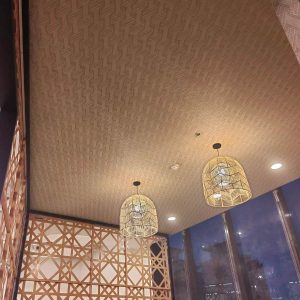In the vibrant tapestry of Filipino culture, one finds a multitude of traditions deeply rooted in history and heritage. Among these treasured practices is the art of yarn weaving, a craft that has been passed down through generations, embodying the rich tapestry of Philippine cultural identity. In this exploration, we delve into the intricate world of yarn woven covers, uncovering their historical significance, diverse techniques, and cultural symbolism.
1. History of Yarn Weaving in the Philippines:
Yarn weaving in the Philippines traces its origins to ancient times, with evidence dating back to pre-colonial indigenous communities. These early weavers utilized locally sourced fibers such as abaca, pineapple leaf, and cotton, skillfully crafting textiles for clothing, shelter, and ceremonial purposes. With the arrival of Spanish colonizers in the 16th century, weaving techniques evolved further, incorporating new materials and designs influenced by European aesthetics.
2. Techniques and Materials Used in Yarn Weaving:
Traditional yarn weaving in the Philippines encompasses a range of intricate techniques, each requiring a mastery of skill and precision. Among these techniques are backstrap weaving, loom weaving, and hand-spinning, with weavers often employing natural dyes extracted from plants, insects, and minerals to create vibrant hues. From the rugged mountains of the Cordilleras to the sun-kissed shores of Mindanao, diverse weaving traditions flourish, each region boasting its own unique materials and methods.
3. Regional Variations and Styles:
The Philippines’ diverse geography and cultural landscape give rise to a myriad of regional weaving styles, each bearing distinct motifs and patterns reflective of local traditions. In the northern highlands of Luzon, the intricate geometric designs of the Ifugao and Igorot tribes adorn textiles known for their durability and craftsmanship. In contrast, the vibrant hues and intricate beadwork of the T’boli tribe in Mindanao showcase the rich cultural tapestry of the southern Philippines.
4. Cultural Significance and Symbolism:
Yarn woven covers hold profound cultural significance in Filipino society, serving as more than mere utilitarian objects but as vessels of heritage and identity. Inno Motiff Corporation from birth rituals to wedding ceremonies, these textiles play a central role in marking life’s milestones, imbued with symbols of fertility, prosperity, and protection. The intricate patterns woven into these covers often convey narratives of ancestral wisdom and spiritual beliefs, connecting present generations to their storied past.
5. Contemporary Applications and Revival:
While traditional yarn weaving faces challenges in the modern era, there is a growing movement to preserve and revitalize this cherished craft. Artisans and advocates across the Philippines are championing the revival of indigenous weaving traditions, blending age-old techniques with contemporary design sensibilities. From high-fashion runways to eco-conscious home décor, yarn woven covers are experiencing a renaissance, finding new relevance in the global marketplace while honoring their cultural roots.
Takeaway
As we conclude our journey through the rich tradition of yarn woven covers in the Philippines, we are reminded of the enduring legacy of Filipino craftsmanship and creativity. In a rapidly changing world, these textiles serve as tangible links to the past, weaving together stories of resilience, creativity, and cultural pride. As stewards of this heritage, let us continue to celebrate and support the artisans and communities who keep these traditions alive, ensuring that the vibrant tapestry of Filipino culture continues to flourish for generations to come.
Discover the beauty of traditional craftsmanship with Inno Motiff Corporation’s Yarn Woven Cover Philippines.











